Table of Contents
Toggle
A. Introduction to LEED Certification
One lighthouse of sustainability in the building sector is LEED accreditation. This LEED certification offers a route to creating eco-friendly and energy-efficient buildings as environmental issues get more urgent. Knowing LEED is absolutely essential for construction professionals in the modern industry.
Sustainability is not only a slogan in the fast changing building scene of today; it is a need. Under increasing pressure to embrace sustainable methods, the building sector—responsible for a sizable share of world resource consumption and greenhouse gas emissions—is This is where LEED (Leadership in Energy and Environmental Design) certification comes in, therefore establishing the baseline for green building codes all around.
Designed by the U.S. Green Building Council (USGBC), LEED certification offers a whole framework for planning, building, and running highly efficient green buildings. It covers important issues such indoor environmental quality, material choice, sustainable site construction, water conservation, and energy economy. Getting LEED certified not only shows a dedication to sustainability but also has clear advantages, including lower running expenses, better building performance, and better occupant health and productivity.
Knowing LEED certification is absolutely essential for anyone working in construction. It entails a thorough procedure that requires cooperation, careful planning, and strict adherence to standards. This book is to give a complete knowledge of LEED certification, stressing its relevance, advantages, and the processes required to reach it. Whether your field of expertise is architecture, engineering, construction, or development, this book will provide the tools you need to negotiate LEED certification’s complexity and apply sustainable ideas to your projects.
Sustainable building demand is rising as environmental issues become more important. LEED certification not only satisfies demand but also establishes building professionals as leaders in the green building industry. Adopting LEED guidelines can help you contribute to a more sustainable future and benefit from lowered costs, better performance, and higher marketability of your projects.
The parts that follow will explore the technicalities of LEED certification, its several components, its advantages, and doable tactics for reaching it. Whether you are starting a new building project or wanting to upgrade an existing one, this guide will give you the knowledge and skills you need to attain LEED certification and thereby help the environment.
B. LEED Certification’s Origins
Rising worries about the environmental effect of the building sector drove the USGBC to start the LEED program in 1998. The initiative was started to support environmentally friendly building methods and sustainable construction practices.
The LEED certification process first concentrated mostly on energy efficiency and reducing building environmental effects. The program has changed with time to incorporate more varied sustainability elements, including indoor air quality, water efficiency, and the use of sustainable materials.
The LEED program has grown to be generally accepted as a benchmark for environmentally friendly building methods since its launch. Countries all throughout the world have embraced it and certified a great variety of structures, from commercial and residential buildings to hospitals and schools.
LEED’s appeal has caused the building sector to drastically change toward more environmentally friendly methods. Sustainable design and including sustainable elements into their projects are becoming more and more important concerns for builders and designers.
LEED certification’s history generally shows the value of sustainability in the building sector and the need for a uniform method of evaluating and advancing environmentally friendly building methods.
C. LEED Certificate Benefits
For the environment, occupants, and building owners, LEED accreditation provides many advantages. LEED certification mostly helps to promote sustainable building techniques that could greatly lower the environmental impact of a construction project.
Because LEED-certified buildings consume less energy, their decreased energy costs and greenhouse gas emissions could follow. Moreover, they consume less water than non-certified structures, so helping to preserve water supplies.
LEED also encourages the use of sustainable materials, therefore lessening the environmental impact of the building sector. Usually created with less resources, sustainable materials have a lower environmental impact than conventional materials.
Furthermore demonstrated are greater property values and rental rates of LEED-certified buildings than of non-certified ones. Environmentally minded consumers and renters ready to pay more for sustainability find them appealing.
LEED-certified buildings’ energy efficiency and other sustainable characteristics help to reduce running costs as well. For managers and building owners, these financial gains might be really great.
At last, LEED accreditation advances better indoor conditions for building users. LEED buildings must satisfy specific indoor air quality requirements, therefore enhancing the health and welfare of the occupants.
LEED certification offers quite a few important advantages overall. LEED-certified buildings have a smaller environmental impact, better property prices and rental rates, improved energy efficiency, less water usage, and better indoor conditions for residents.
D. Why does LEED certification matter?
LEED is significant for a number of factors. First of all, it supports environmentally friendly building methods that are absolutely essential to lessening the influence of the building sector. A large amount of global carbon emissions come from the building sector; sustainable building methods help to lower these emissions and fight climate change.
LEED certification offers a competitive edge in the market of today as well. Having a LEED-certified building shows a dedication to sustainability and draws ecologically minded renters and businesses as more corporations give sustainability top priority. Because of the apparent value of sustainability, LEED certification can also result in better property values and rental rates.
LEED can also help building managers and owners cut running expenses. Usually more energy efficient and using less water than non-certified buildings, LEED buildings can help cut both energy and water expenditures.
LEED accreditation also advances better indoor conditions for building occupants. LEED certified buildings must satisfy specific indoor air quality criteria, therefore enhancing the health and welfare of the residents.
LEED is generally significant since it encourages sustainable building techniques, offers a competitive edge in the market, and can lead to less running expenses and better indoor conditions for building occupants.
E. LEED certification methods in 2024
Achieving LEED certification means satisfying specific criteria and accumulating points depending on environmentally friendly construction elements. The type of facility and degree of certification sought determine the particular criteria and scoring system.
Registering the building project with the USGBC and paying a registration fee marks the first step toward LEED certification. The building crew can start working to satisfy criteria and accrue points for sustainable elements once the project is registered.
With buildings gaining points for sustainable features in many categories, including sustainable site development, water efficiency, energy and atmosphere, materials and resources, and indoor environmental quality, LEED certification is based on a points system.

The degree of certification sought determines the required point count for certification. A building must get at least 40 points out of a possible 110 to be LEED. Certified (40–49 points); Silver (50–59 points); Gold (60–79 points); and Platinum (80+ points) are the four certification levels.
Meeting specific standards linked to sustainable site development, water efficiency, energy and atmosphere, materials and resources, and indoor environmental quality qualifies one for LEED certification. To be certified, one must satisfy these requirements, since they are obligatory.
Apart from fulfilling requirements, buildings have to be scored for sustainable elements in every area. One can get points for a variety of elements, including low-emission materials, smart lighting, water reusing systems, and enough ventilation.
A building can seek LEED certification once it meets the criteria and accumulates the required points. After looking over the application, the USGBC finds the construction satisfies certification standards. Should the construction satisfy criteria, it will get LEED at a suitable level.
Achieving LEED certification requires generally fulfilling specific criteria and accumulating a given amount of points depending on sustainable construction elements. This is a demanding procedure requiring thorough documentation and validation of sustainable building techniques.
F. The LEED Certificate Application Process in 2024
A demanding, multi-stage procedure, the LEED certification process entails thorough paperwork, USGBC assessment and verification. The procedure starts with registration, when the building project team pays a registration fee and registers the project with the USGBC.
Following a set of conditions pertaining to the sustainable development of the site, water efficiency, energy and atmosphere, materials and resources, and internal environmental quality, the building team must register, after which it must follow To be certified, one must satisfy these requirements, since they are obligatory.
The building team can start accumulating points for sustainable elements in every category once the prerequisites are satisfied. One can get points for a variety of elements, including low-emission materials, smart lighting, water reusing systems, and enough ventilation.
The building crew has to meticulously record all sustainable building techniques and features during the certification procedure. The USGBC receives the documentation next to evaluate and authenticate.
The USGBC certifies at the appropriate level following evaluations and verifications of the documents. Usually lasting five years, certification is valid for a specific amount of time; after which the building must be recertified to keep its certification.
Completing prerequisites, gaining specified points for sustainable features, recording sustainable building practices, and turning in documentation for USGBC evaluation and validation define the LEED certification process overall. The building design team must meticulously prepare and carry out this demanding process under careful consideration.
G. The different LEED certifications available in 2024
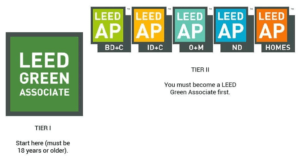
Each of the several buildings and projects eligible for LEED certification has criteria and a scoring methodology. LEED for Building Design and Construction (BD+C), LEED for Interior Design and Construction (ID+C), and LEED for Operations and Maintenance (O+M) are the most commonly occurring varieties of LEED certification.
LEED BD+C is intended for substantial renovations and new buildings, as well as for new development initiatives. From design to construction, the certifying process assesses the building’s sustainability qualities. Including particular criteria and chances for sustainable site development, water efficiency, energy and atmosphere, materials and resources, indoor environmental quality,
LEED ID+C is intended for interior fit-out projects spanning commercial and institutional environments. The certification procedure assesses interior space sustainability, including materials, heating and cooling systems, and lighting. Including particular criteria and chances for sustainable site development, water efficiency, energy and atmosphere, materials and resources, indoor environmental quality,
Designed for existing structures, LEED O+M assesses building operations and maintenance practices’ sustainability. The certification method emphasizes chances for sustainable cleaning techniques, energy and water conservation, waste reduction, and interior environmental quality, together with standards.
Apart from these three major forms of certification, there are specialist certificates for various kinds of construction and projects. These comprise LEED for Neighborhood Development, LEED for Homes, LEED for Schools, LEED for Healthcare, and others. Every one of these certifications has particular criteria and scoring system catered to the requirements of every particular building or project.
LEED certification is generally accessible for a variety of building kinds and projects, each with own set of criteria and scoring system meant to support sustainable building practices.
H. LEED Certification Requirements in 2024
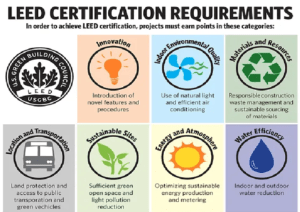
The type of building and the degree of certification sought will determine the requirements to earn LEED certification. All LEED certified buildings must, however, satisfy specific conditions pertaining to sustainable site development, water efficiency, energy and atmosphere, materials and resources, indoor environmental quality, etc.
For example, some of the requirements for LEED certification could consist in:
1. Improving interior air quality with low-emission materials, including adhesives and paints
2. putting a building waste management strategy into effect to steer garbage away from landfills
3. Give people access to public transit to lower emissions from mobility.
4. Conserving Water with Effective Landscape Design and Irrigation Systems
5. Approaching energy performance criteria helps to lower greenhouse gas emissions and energy consumption.
Apart from fulfilling these requirements, buildings have to get a set amount of points for sustainable elements in every category. One can get points for a broad spectrum of activities, including employing sustainable materials, running a green cleaning program, switching to renewable energy sources, and giving enough ventilation.
The type of building and degree of certification sought determine the particular criteria and points system used. A building needs at least 40 points out of a potential 110 to be certified. Certified (40–49 points); Silver (50–59 points); Gold (60–79 points); and Platinum (80+ points) are the four certification levels.
All things considered, LEED certification criteria are meant to encourage sustainable building methods and lower the environmental impact of the building sector. The prerequisites and grading system give building owners and project teams structure to apply sustainable elements and record their attempts toward certification.
The 8 LEED certificate categories are:
1. LEED Certificate and Building Performance
Several significant areas of building performance have proven to benefit from LEED certification.
With reduced greenhouse gas emissions and improved water economy, LEED-certified buildings use less energy. Low-emission products and materials help them to improve indoor air quality likewise. Along with materials, the certification procedure calls for sustainable site design.
LEED accreditation supports a more sustainable construction industry, improves occupant health and productivity, and can help cut operational expenses. Pursuing LEED certification can help building owners and managers save on running costs, increase occupant health and productivity, and support a more sustainable construction industry.
2. LEED Certification and Energy Conservation
LEED certification requires buildings to meet specified energy efficiency criteria, focused on energy economy. Buildings must consume less energy for heating, cooling, and lighting than conventional architecture.
High-performance HVAC systems, LED lighting, and building automation systems are employed to cut energy usage and costs. LEED certification also covers alternative energy sources like solar panels or wind turbines. LEED accreditation fosters sustainable behaviors and environmental effects.
3. LEED Certification and Indoor Air Quality
LEED certification emphasizes creating healthy indoor environments by means of low-emission materials and enough ventilation and air filtering. It gives indoor air quality top priority, therefore lowering the likelihood of health problems including allergies, headaches, and respiratory disorders.
LEED-certified buildings include low-emission materials and enough ventilation to support occupant well-being, therefore offering a comfortable, healthy atmosphere.
4. LEED certification and water efficiency
LEED accreditation gives water efficiency in buildings top priority, thus, buildings must satisfy particular standards to save water and lower consumption.
LEED-certified buildings mandate low-flow toilets and faucets as well as other water sources like gray or rainfall. This promotes sustainable water management practices, helps to cut expenses and water use. LEED-certified buildings improve construction water efficiency, therefore lowering environmental effects and energy usage.
5. LEED Certification and Ecological Materials
LEED certification stresses the use of recycled content goods and locally obtained resources, as well as sustainable materials in building and manufacturing. By giving sustainable materials top priority, conserving natural resources, and cutting waste, LEED-certified buildings lower their environmental impact.
Additionally, promoting trash reduction and recycling helps to create a more sustainable built environment. LEED certification has been shown to help building operations and construction apply sustainable materials and techniques.
6. LEED certification and Innovation
Projects exceeding the basic LEED criteria to attain extraordinary sustainability are recognized in the innovation category. It motivates initiatives to apply creative technology and approaches that support sustainability and lower environmental effects. Points are given for creative ideas that show a notable enhancement in sustainability.
7. LEED certification and Location and Transportation
The Location and Transportation category centers on the location and choices for transportation available for the project.
It supports initiatives to build in current neighborhoods close to public transportation, lower parking demand, and advance substitute forms of mobility. Points are given for ideas that reduce the carbon footprint connected with travel.
8. LEED certification and Regional Priority
Projects meeting regional environmental concerns are recognized under the Regional Priority category. Projects aiming at local environmental issues, including waste reduction, energy efficiency, and water conservation, get support. Strategies tackling regional sustainability issues get points.
I. LEED Certification Costs
The degree of certification requested, as well as the size and complexity of the building project, will affect the cost of getting LEED certified.
The USGBC charges a certification fee and a registration cost commensurate with the building’s size. The application fee varies from $900 to $1,200 based on required degree of certification and kind of building. The size of the facility and the degree of certification requested determine the range of the certification fee—$2,700 to $34,000.
Apart from these expenses, using sustainable building techniques and recording them for the certification process incur expenses as well. Hiring a sustainability consultant or engineer, running energy and water audits, and buying sustainable goods and tools could all be expenses.
The building project and the particular certification criteria will considerably affect the overall cost of LEED certification. Nonetheless, many managers and building owners believe that the financial gains of LEED—such as reduced running expenses and better property values and rental rates— exceed the expenses of certification.
Although the cost of LEED certification can be high overall, one should take long-term financial and environmental gains of sustainable building techniques into account.
J. Find out whether LEED certification applies to my project.
If you are choosing whether to become LEED certified for your building, here are some questions to ask:
Does your organization or building satisfy LEED certification requirements? A building or project eligible for LEED certification must be either new construction, a major renovation, or an existing structure. It also has to follow specific minimum dimension and occupancy level guidelines.
Do you commit yourself to sustainability and environmental responsibility? If sustainability and environmental responsibility are top priorities for your business, LEED certification might be a fit for you.
Does earning a LEED certification offer any benefits? Potential advantages of LEED certification are better environmental performance, higher property value, enhanced brand image, and grant and financial incentive access.
Should any of these benefits appeal to you, certification could be well worth it.
Are you ready to invest the money and time needed to earn LEED certification? Getting LEED certified calls for gathering and turning in significant documentation proving adherence to LEED criteria. Still, it can take time and call for resources.
Consequently, one should take into account whether one is ready to devote the necessary time and effort to the task.
LEED certification for your building will ultimately depend on your specific objectives and aspirations. It could be something to consider if you are committed to sustainability, see the probable advantages of certification, and are ready to commit the time and money required to finish the procedure.
K. How could one grow into a LEED professional?
To be a LEED Green Associate (GBCI), you have to pass an exam administered by Green Business Certification, Inc.
Examining indoor environmental quality, materials and resources, water and energy efficiency, and sustainable site construction, among other topics, will challenge you.
Higher-level credentials, such as the LEED AP, which shows more and deeper knowledge of green building principles and practices, as well as apply LEED concepts in construction and project design, should you be interested in bringing your LEED knowledge to a more advanced level.
For those hoping to work with LEED, some companies provide job training and educational courses.
Many schools and universities also provide specific courses covering LEED-related degree and certification programs and sustainable building techniques.
To become one, you also have to pass a test given by GBCI proving specific levels of knowledge and expertise needed.
L. What are the primary challenges toward LEED certification?
LEED certification can be challenging since it calls for certain environmental efficiency and sustainability requirements to be satisfied. These are some of the primary challenges projects could run into trying to get LEED certified:
To be LEED certified, a building or project must satisfy a demanding set of standards in areas like energy efficiency, water utilization, interior environmental quality, materials, and resources. This can be challenging, particularly for programs with minimal resources or a low starting point for sustainability.
Getting and turning in a lot of documentation and evidence of compliance with LEED requirements is part of the LEED certification process. This can take a lot of time and might call for cooperation between engineers, architects, and construction professionals, among other people.
Finances and expenses: Getting LEED certified could be costly since it could call for further spending on environmentally friendly, energy-efficient goods. Projects seeking to pay for these costs could have to raise their budget or locate extra money.
M. How long does it take to get LEED certified?
The kind of certification, project size, and degree of complexity will all affect the time needed to earn a LEED certification. Usually taking several months on average, or maybe longer, the process can take several months to finish.
Following are some broad guidelines for the LEED certification process timing:
Prepare and make sure your project satisfies LEED qualifying criteria before starting the certification process. This can entail gathering evidence of compliance and paperwork to support any required project design changes to satisfy LEED criteria.
Once the project is finished, the LEED certification organization should get the certification request together with supporting paperwork. Usually, this process consists of finishing the required paperwork and an online application.
Following application submission, the LEED certification body will examine and validate it to ensure all criteria have been satisfied. This process may take several weeks or more, depending on the degree of the project’s complexity and the volume of work the certifying body does.
Following the examination and verification process, the LEED certification authority will make a decision on whether or not to issue certification. Should the project satisfy pertinent standards, it will be LEED certified. Before the project may be recertified, the certification authority may thus offer comments on areas requiring development.
Generally speaking, given the several months or more required for the LEED certification procedure, one should give enough time. Working with a consultant or LEED professional is also advised to help steer the project through the process and guarantee it is finished successfully and quickly.
N. Successful certifications worldwide:
These LEED-certified buildings are from all around the world:
New York, USA: One World Trade Center
Designed to be among the most environmentally friendly and energy-efficient constructions worldwide, this well-known Manhattan structure is the highest in the Western Hemisphere. For using sustainable materials, water conservation, and energy-efficient technology installation, it was LEED Platinum certified.
Washington, D.C.’s national Geographic headquarters
Using sustainable materials, energy-efficient technologies, and water conservation strategies, the project was LEED Platinum certified. Additionally included in the building are a rainwater collection system and a green roof.
In Cornwall, England, the Eden Project.
This very famous project, also sought after as a tourist destination, has LEED Platinum certification for its mix of sustainable materials, energy-efficient technologies, and water conservation techniques. Huge greenhouse domes filled with plants from all around the world have been built here.
The Pearl, Qatar
LEED Platinum certification for the huge mixed-use complex The Pearl in Qatar comes from its sustainable design, which emphasizes indoor air quality, water conservation techniques, and energy-efficient materials and systems.
Cyberport, Hong Kong
With its sustainable design—which incorporates the use of energy-efficient systems and materials, water conservation measures, and an emphasis on indoor air quality—Cyberport, a vast commercial and technological park in Hong Kong, has gained LEED Platinum certification.
These are but a handful of LEED-certified buildings from all around the globe. LEED certification of many buildings and projects indicates their commitment to environmental preservation and sustainability.
O. Today, which are the main competitors to LEED certification?
LEED is not the only green building certification system available, even if it is among the most well-known and most often utilized ones.
Other systems of green building certification competing with LEED include:
Beginning in the United Kingdom, the green building certification system BREEAM (Building Research Establishment Environmental Assessment Method) has already expanded to about 70 countries all around. Using points for achieving specific criteria in categories including energy efficiency, water use, and materials, it evaluates the environmental performance of buildings.
Using a points system to evaluate building environmental performance, Green Star is an Australian green building certification system whereby points are awarded for meeting specific criteria in categories including energy efficiency, water use, and indoor environmental quality.
Emphasizing energy efficiency and indoor air quality, passive house is a performance-based ecological construction certification process. Designed to have ideal indoor air quality and to require very little energy for heating and cooling, passive home buildings
Designed with a strict set of performance standards in areas including energy, water consumption, materials use, and health and happiness, Living Building Challenge is a green building certification program assessing a facility’s environmental performance.
These are only a handful of the rivalry LEED green building certification schemes face. Other methods are easily accessible and each has a unique approach for spotting and assessing sustainable constructions.
P. Which countries now include the most LEED certified buildings?
The following countries have the most LEED-certified buildings as of 2021:
United States: With more than 100,000 certified buildings, the nation boasts the most LEED-certified construction worldwide. Particularly valued in the United States by businesses, workplaces, and colleges is LEED.
China boasts the second greatest number of LEED-certified buildings among countries, with more than 30,000 registered buildings. The Chinese government has given sustainability top priority and developed regulations meant to encourage the use of green building methods.
With more than 10,000 approved buildings, Canada boasts third-highest LEED-certified building count. With LEED, the most often occurring sectors in Canada are commercial, office, and institutional ones.
India boasts the fourth-highest number of LEED certified buildings among more than 7,500 buildings that have attained certification. The Indian government has given sustainability top priority and established regulations meant to encourage the use of environmentally friendly building methods.
UAE: The fifth-highest count of LEED-certified buildings among more than 6,000 registered buildings is found here. The UAE government has established rules to encourage the acceptance of ecologically friendly building methods and given sustainability great importance.
These are a few countries with many LEED-certified buildings. Many other countries have also adopted LEED and are assessing and appreciating sustainable buildings with it.
Q. LEED certification within India
LEED (Leadership in Energy and Environmental Design) accreditation and LEED-certified buildings India has made noteworthy advancement in The following are salient features stressing India’s successes:
As the leading nation in LEED Zero green construction projects, India has risen, overtaking China and the United States. Out of 150 LEED Zero certified projects, India boasts 45% or 73 such projects; Tamil Nadu and Haryana top the certifications in this regard.
India has regularly been among the top three nations for LEED certification. India attained LEED certification for 248 projects totaling a gross area of 7.23 million square meters (GSM) in 2023.
Ranked third worldwide in LEED-certified green buildings in 2021 and maintained its third status in 2023, India China came in first and Canada second.
India has certified around 2.8 million GSM of LEED-certified space in 2021, up almost 10% from year before.
India’s emphasis on green construction technologies fits its aspirational target of reaching net zero greenhouse gas (GHG) emissions by 2070. This devotion highlights India’s commitment to environmental conscience and sustainable living.
Green Business Certification Inc. (GBCI), which has been striving to hasten the acceptance of green buildings all throughout India, oversees LEED administration in LEED India.
These successes show India’s dedication to sustainable development as well as its notable advancement in using green building techniques.
India has advanced LEED certification and LEED-certified construction significantly. The salient features here are:
India boasts more than 212 million gross square meters (GSM) from over 2,200 LEED certified buildings.
LEED Certified Buildings: Although the given sources do not specifically address the precise distribution of LEED certified buildings throughout Indian states,. Still, it is noted that Tamil Nadu and Haryana lead the LEED certificate race.
R. Could LEED certification raise the expenses of my building project? How can I obtain a certification without having expenses rise?
If LEED certification is sought for a building or project, expenses could rise since sustainable, energy-efficient materials and technologies may be needed. LEED certification is also possible, nevertheless, without significantly raising the project’s overall cost. The following strategies might help you to cut the cost of LEED certification:
Plan ahead: Usually, it is more affordable to include sustainable design and construction methods from the start of the project than to try to adapt them afterward. By performing your advance research and considering LEED certification from the start, you may typically discover answers to meet LEED criteria without appreciably raising the project’s total cost.
Choose low-cost solutions since not all LEED points are created equally. Giving the most cost-effective credits top priority for your project is essential since some points can be more expensive to achieve than others. For instance, points on energy efficiency and water conservation sometimes have more cost-effectiveness than those on materials and resource points.
Use the subsidies and financial incentives provided to help offset the expenses of LEED certification acquisition. Grants, tax advantages, tax credits, and other kinds of financial aid could all fall under this. Examining these options helps you to decide whether they fit your project.
Working with a LEED professional will help you grasp the certification process and find reasonably priced methods to earn the credits you need. Additionally able to assist you in locating any financial incentives or supports perhaps present to help offset the expenses is a LEED consultant.
S. How could I begin my LEED certification with UGREEN?
Here are some actions you may take to start your LEED certification process for your project or building if you would like to collaborate with UGREEN:
To be eligible for LEED certification a building or project must be either a new construction, a major renovation, or an existing building. It also has to follow particular minimum dimension and occupancy level guidelines. Proceed to the next phase if your project or organization satisfies these standards.
Review the LEED Rating System; each of the numerous LEED rating systems has criteria and needs unique to it. To grasp the exact needs you will have to fulfill. Evaluating the grading system that is best suited for your project or building is absolutely vital.
After proving your eligibility and assessing the pertinent LEED rating system, the next step is to get in touch with ugreen.io to go over your project and learn more about how we may assist. To go over your particular goals and needs, you can set up a meeting with our staff; we can then provide guidance on the LEED certification process and following actions.
Before the LEED certification process starts, a range of records and evidence of compliance with LEED criteria have to be compiled and ready.Projects in design and construction, energy modeling studies, and other documentation might all fit here. UGREEN will help you get and prepare these records.
T. LEED Certification: Conclusion
All things considered, LEED is a vital benchmark for advancing environmentally friendly building techniques and lessening the influence of the building sector on its surroundings. LEED promotes the acceptance of environmentally friendly practices by mandating buildings satisfy specific criteria and earn a particular number of points depending on sustainable building traits.
In terms of energy efficiency, water efficiency, and indoor air quality, LEED-certified buildings have shown better performance than non-certified ones. They have less of an impact on the surroundings and employ sustainable materials as well. Moreover, LEED certification provides a competitive edge in the market today since more businesses and corporations give sustainability top priority.
Getting LEED calls for a commitment to environmentally friendly building methods. LEED does, however, offer several advantages, like reduced running costs, better occupant health and productivity, and a more sustainable building sector.
All things considered, LEED certification is a valuable tool for managers and building owners looking to support sustainability and help to create a better future.
FAQS
LEED certification and green building certification differ in what exactly?
Originally created by the USGBC, LEED is a particular kind of green building certification. LEED is among the most well-known and acknowledged green construction certifications, even if others are also available.
LEED certification takes what length of time?
The size and complexity of the building project, as well as the degree of certification sought, determine the time needed to get LEED certified. To get certification, it can take a few months to many years.
Is LEED certifiable something every building can get?
Indeed, any building can be LEED certified as long as it satisfies the criteria and earns the required points, depending on the features of sustainable architecture.
Is LEED certification costly?
The size and complexity of the building project, as well as the degree of certification sought, determine LEED’s cost. Still, the long-term advantages of LEED certification—such as reduced running expenses and better property values—may exceed the initial outlay.
Is LEED certification for just new construction?
Through the LEED for Operations and Maintenance certification program, one can also acquire LEED certification for currently existing buildings. Designed for buildings currently built and in use, this program advocates sustainable building techniques for continuous operations and maintenance.

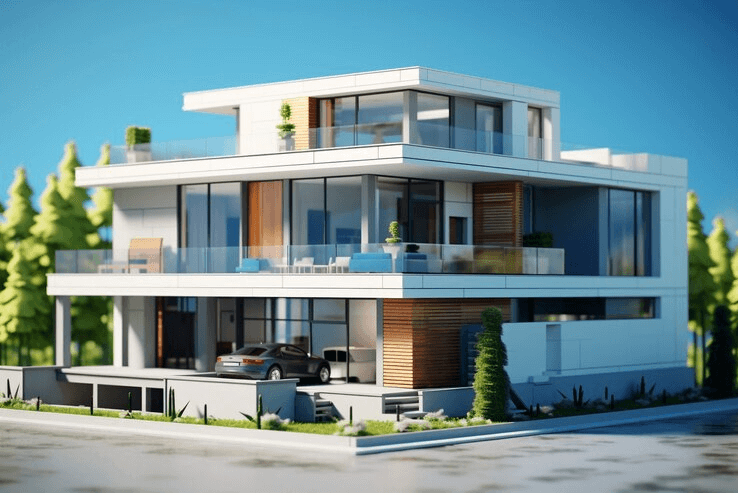
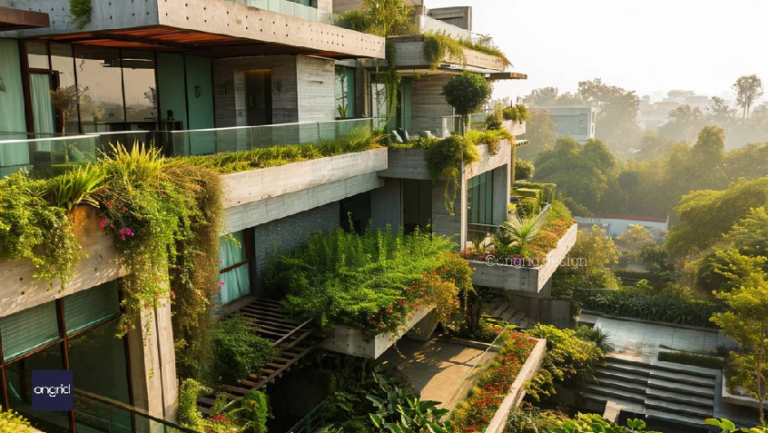
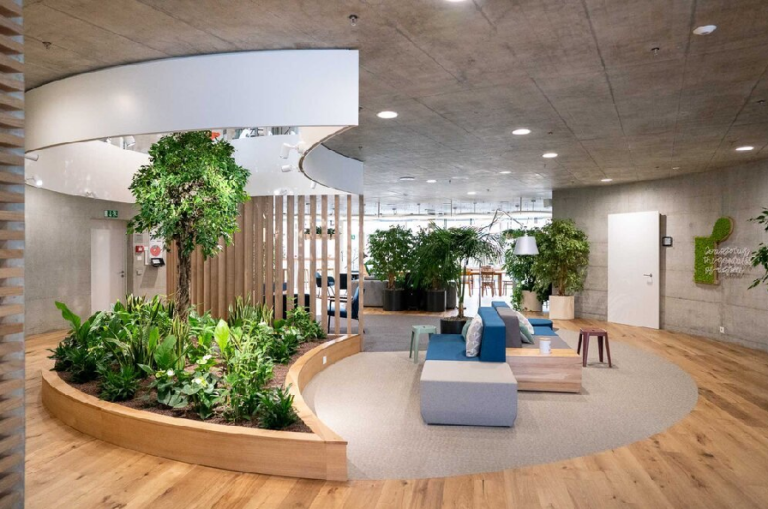
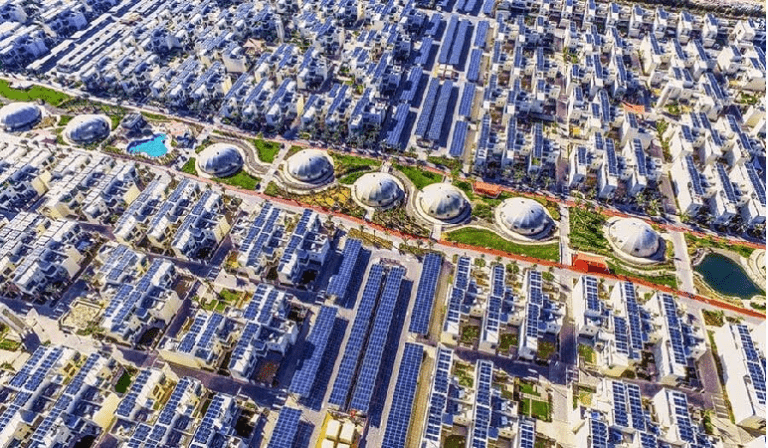
My fascination with your creations is on par with your own. The sketch you’ve presented is tasteful, and the content you’ve authored is of a high caliber. Nevertheless, you seem uneasy about the prospect of embarking on something that could be improved further. I believe you’ll be able to resolve this concern in a timely manner.
Hey people!!!!!
Good mood and good luck to everyone!!!!!
allegheny county real estate I’m often to blogging and i really appreciate your content. The article has actually peaks my interest. I’m going to bookmark your web site and maintain checking for brand spanking new information.
dodb buzz Nice post. I learn something totally new and challenging on websites
Thank you for your sharing. I am worried that I lack creative ideas. It is your article that makes me full of hope. Thank you. But, I have a question, can you help me?
Thank you for your sharing. I am worried that I lack creative ideas. It is your article that makes me full of hope. Thank you. But, I have a question, can you help me?
please tell me your question